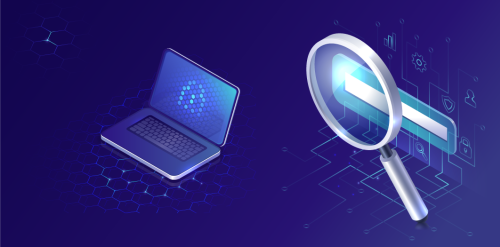
Enhancing Cybersecurity: The Vital Steps of the Vulnerability Assessment Process
In today's digital landscape, where cyber threats constantly evolve, businesses must prioritize the security of their systems and data. A crucial aspect of maintaining robust cybersecurity is conducting regular vulnerability assessments. These assessments allow organizations to identify and proactively address weaknesses before malicious actors can exploit them.
This article will delve into the five key steps in the vulnerability assessment process, enabling you to fortify your organization's defense against cyber threats.

Initial Preparation
Before embarking on a vulnerability assessment, laying the groundwork for a comprehensive and productive evaluation is essential. Therefore, during the initial preparation phase, the security team defines the scope and goals of the assessment by:
- Identifying protected assets and equipment: Mapping out all endpoints and understanding the infrastructure's key components.
- Assessing the business value of each asset: Determining the potential impact of an attack on different assets, prioritizing those with higher importance.
- Identifying access controls and security requirements: Evaluating the existing security measures and any specific requirements for each system.
- Evaluating sensitive data handling: Understanding the nature of sensitive data and its transfer mechanisms between systems.
- Establishing baselines: Recording the current state of services, processes, and open ports on protected assets to measure any deviations during the assessment.
By comprehensively gathering this information, security teams gain a clearer understanding of potential attack surfaces and can develop a robust remediation strategy.

Vulnerability Assessment Testing
Once the initial preparation is complete, vulnerability assessment testing begins. This stage involves running automated vulnerability scans on target devices and environments. To streamline and optimize this process, teams utilize various tools such as vulnerability databases, vendor security advisories, and threat intelligence feeds.
Manual investigations supplement automated scans to ensure a thorough examination of the security posture of the systems. The test duration can range from a few minutes to several hours, depending on the system's size and complexity.
Vulnerabilities Prioritization
In this stage, the security team focuses on refining the results of vulnerability scans. They filter out false positives and prioritize vulnerabilities based on several factors, including:
- Severity score: Assessing the criticality of vulnerabilities as provided by vulnerability databases.
- Business impact: Evaluating the potential consequences if a vulnerability is exploited, such as financial loss or reputational damage.
- Risk to sensitive data: Identifying vulnerabilities that pose a risk to sensitive information, such as personally identifiable data or trade secrets.
- Exploitability: Assessing how easily an attacker can exploit a vulnerability.
- Duration of vulnerability: Considering for how long the vulnerability has existed and been exposed to potential threats.
- Lateral movement potential: Analyzing whether the vulnerability can facilitate unauthorized access to other sensitive systems within the network.
- Patch availability and effort required: Evaluating the presence of patches and the effort needed to deploy them effectively.
By prioritizing vulnerabilities, organizations can focus on addressing the most critical risks and allocate resources accordingly.

Creating a Vulnerability Assessment Report
A comprehensive vulnerability assessment report aims to communicate the assessment findings and guide the remediation process effectively. It consolidates vulnerabilities identified across all protected assets and includes a detailed remediation plan.
For medium to high-risk vulnerabilities, the report provides information such as the vulnerability's nature, the systems it affects, the potential damage if exploited, and the recommended plan and effort required for mitigation. Whenever possible, the report also includes a proof of concept (PoC) that demonstrates how critical vulnerabilities could be exploited.
Continuous Vulnerability Assessment
Recognizing that vulnerabilities are not static, organizations must adopt a continuous vulnerability assessment approach. While scans provide a point-in-time snapshot of vulnerabilities, new deployments, configuration changes, and emerging threats can introduce new vulnerabilities. Therefore, continuous vulnerability assessment becomes crucial.

To achieve continuous vulnerability assessment, organizations should integrate automated vulnerability assessment into their software development processes, particularly within the continuous integration and deployment (CI/CD) pipeline. By doing so, vulnerabilities can be identified and addressed early in the software development lifecycle (SDLC), reducing the need for patching vulnerable code after deployment.
While incorporating vulnerability assessment into the CI/CD pipeline is essential, conducting regular vulnerability scans on production systems is equally important. These scans help identify any residual vulnerabilities in legacy systems or third-party applications that the CI/CD process may not cover.
Conclusion
The vulnerability assessment process is a vital component of any robust cybersecurity strategy. By following the five steps outlined in this article, organizations can effectively identify and address vulnerabilities within their digital infrastructure.
From initial preparation and vulnerability testing to prioritizing vulnerabilities, creating comprehensive reports, and embracing continuous vulnerability assessment, businesses can proactively safeguard their systems and data from potential cyber threats.
By implementing a systematic and ongoing vulnerability assessment process, organizations can enhance their security posture, reduce the risk of data breaches or system compromises, and maintain trust and confidence among their clients and stakeholders.
Remember, cybersecurity is an ongoing endeavor, and staying vigilant in identifying and mitigating vulnerabilities is key to maintaining a strong defense against evolving cyber threats.


